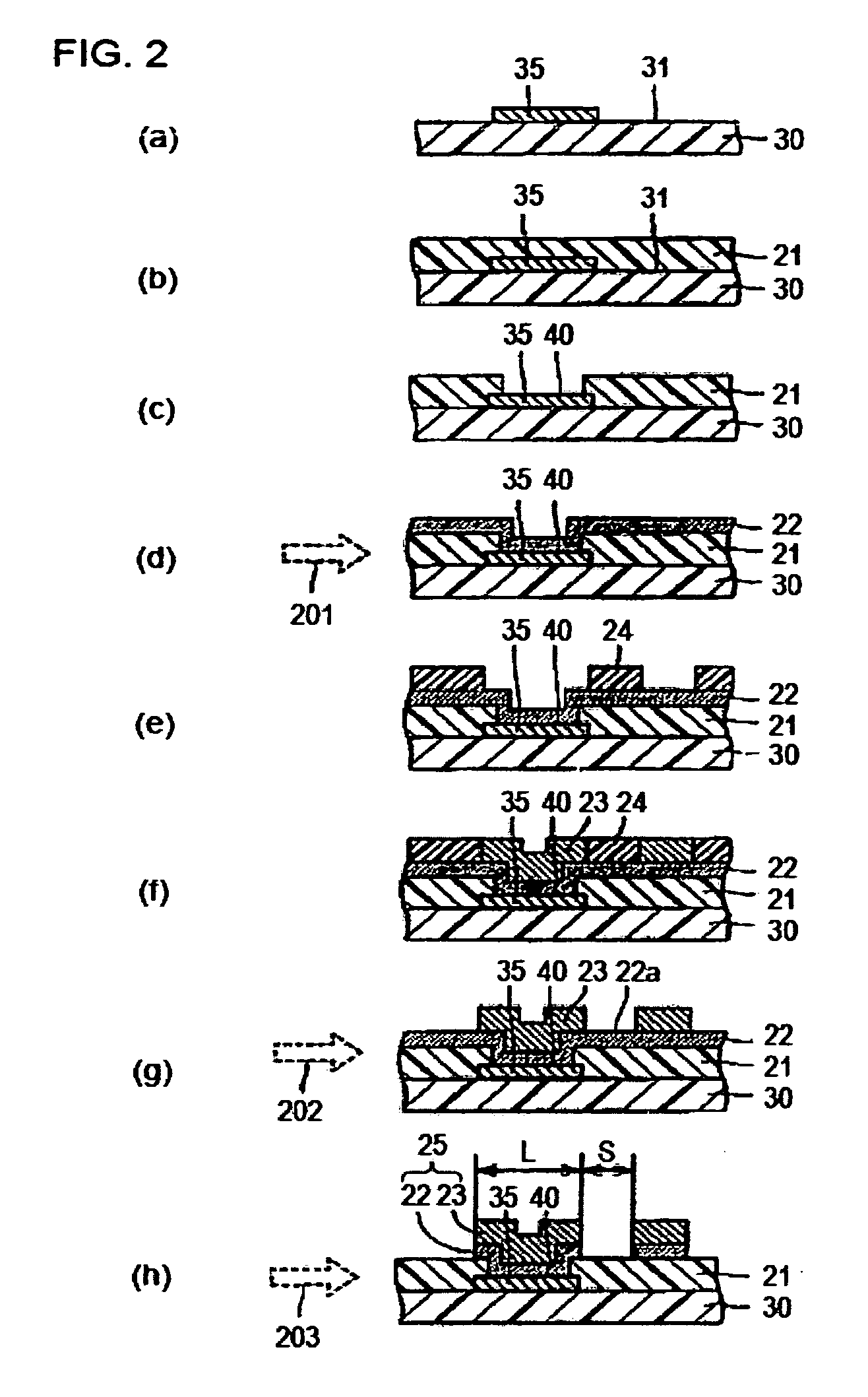Polyimide Resin Composition, Polymer Film Containing Polymide Resin and Laminate Using the Same, and Method for Manufacturing Printed Wiring Board
- Summary
- Abstract
- Description
- Claims
- Application Information
AI Technical Summary
Benefits of technology
Problems solved by technology
Method used
Image
Examples
examples
[0203] While the present invention will be described in more detail based on examples and comparative examples below, it is to be understood that the present invention is not limited thereto. It will be obvious to those skilled in the art that various changes, modifications, and alterations can be made without departing from the scope of the invention.
embodiment i-1
Synthesis of Thermoplastic Polyimide Resin Precursor (Production Method X)
[0204] An example of a method for producing a polyamic acid which is a precursor of a thermoplastic polyimide resin will be described below. First, 0.30 mol of 1,2-bis[2-(4-aminophenoxy)ethoxy]ethane (hereinafter referred to as “DA3EG”) and 0.70 mol of 2,2′-bis[4-(4-aminophenoxy)phenyl]propane (hereinafter referred to as “BAPP”) were dissolved in N,N-dimethylformamide (hereinafter referred to as “DMF”). While stirring the DMF solution, 0.83 mol of 3,3′,4,4′-ethylene glycol dibenzoate tetracarboxylic dianhydride (hereinafter referred to as “TMEG”) and 0.17 mol of 3,3′,4,4′-benzophenonetetracarboxylic dianhydride (hereinafter referred to as “BTDA”) were added thereto. The resulting mixture was stirred at about 25° C. for about one hour to obtain a DMF solution of a polyamic acid having a solid content of 20% by weight.
Synthesis of Thermoplastic Polyimide Resin Precursor (Production Method Y)
[0205] Furthermore...
examples 1 to 18
[0220] By adding six types of triazine thiol compounds (TT, TTN, AF, AFN, DB, and DBN) to the respective DMF solutions of the polyamic acid produced by the production method X, Y, or Z described above, single layer films composed of 18 types of thermoplastic polyimide resins were produced. Subsequently, an electrolytic copper plating layer was formed on the thermoplastic polyimide resin films, and adhesion strength, etc. were measured. Description will be made in detail below. First, one of the six types of triazine thiol derivatives was added to the DMF solution of the polyamic acid produced by the production method X, Y, or Z described above in an amount of 0.1% by weight relative to the amount of the polyimide resin composition. After the addition, the DMF solution of the polyamic acid was applied onto a surface of an aluminum foil, and heat treatment was performed after separation to produce a thermoplastic polyimide resin film. The thickness of the thermoplastic polyimide resin...
PUM
| Property | Measurement | Unit |
|---|---|---|
| Temperature | aaaaa | aaaaa |
| Length | aaaaa | aaaaa |
| Length | aaaaa | aaaaa |
Abstract
Description
Claims
Application Information
 Login to View More
Login to View More - R&D
- Intellectual Property
- Life Sciences
- Materials
- Tech Scout
- Unparalleled Data Quality
- Higher Quality Content
- 60% Fewer Hallucinations
Browse by: Latest US Patents, China's latest patents, Technical Efficacy Thesaurus, Application Domain, Technology Topic, Popular Technical Reports.
© 2025 PatSnap. All rights reserved.Legal|Privacy policy|Modern Slavery Act Transparency Statement|Sitemap|About US| Contact US: help@patsnap.com



